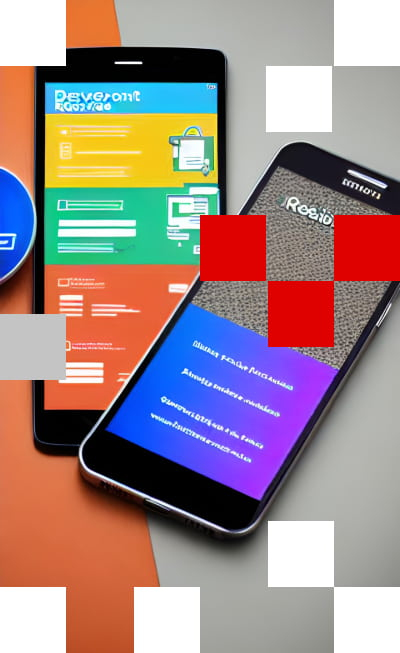RESPONSIVE WEBSITE DEVELOPMENT (MOBILE FRIENDLY)

In today's world, mobile devices have become an integral part of many people's lives. According to a study by Statista, in 2021 the number of mobile device users in the world will reach 7.1 billion people, and the share of mobile traffic in total Internet traffic will be 54.8%. This means that the majority of your website visitors will be accessing it from mobile devices such as smartphones and tablets.
Therefore, if you want to attract and retain the attention of your target audience, you must provide them with a comfortable and convenient interaction with your site on any device. To do this, you need to design the site in such a way that it adapts to different screen sizes and resolutions, while maintaining its functionality and design. This approach is called responsible website development (responsive web design).
Importance of a mobile website
The mobile version of the site is not just a reduced copy of the web version. This is a separate product that should take into account the behavior and expectations of mobile device users. Among the advantages of the mobile version of the site are the following:
- Increased conversion. Mobile device users are more likely to purchase or order a service if they can easily and quickly find the information they need and perform the desired action on the site. According to Google research, 61% of users are more likely to leave a site if it is not mobile-friendly, and 67% are more likely to make a purchase or order on a site that is optimized for mobile devices.
- Improved reputation. Mobile users appreciate sites that care about their convenience and provide them with quality content and services. Such sites inspire confidence and loyalty among visitors who are ready to recommend them to their friends and acquaintances.
- Advantage over competitors. Despite the fact that responsible site development has become the standard in the web industry, many sites are still not adapted for mobile devices or do it poorly. This gives you the opportunity to stand out from your competitors and reach more potential customers.
- Increasing positions in search engines. Search engines, such as Google and Yandex, take into account the adaptability of the site for mobile devices when ranking search results. Since 2015, Google has introduced a mobile index that prioritizes those sites that display well on mobile devices. Thus, if your site is mobile-friendly, you will increase your chances of getting to the top of search results and attracting more organic traffic.
How the mobile version should differ from the web version of the project
The mobile version of the site should not be just a smaller copy of the web version. It should take into account the behavior and expectations of users of mobile devices, as well as the technical limitations of these devices. Here are some aspects in which the mobile version should differ from the web version:
- Structure and navigation. The mobile version of the site should have a simpler and more logical structure that will allow the user to quickly find the information they need or take the desired action. Website navigation should be convenient and intuitive, as well as adapted to the screen size and ways of interacting with the device (touch, gestures, scrolling). For example, for the mobile version of the site, a hamburger menu is often used, which hides the main sections of the site behind an icon in the form of three horizontal stripes, thereby saving screen space.
- Content and design. The mobile version of the site should contain only the most important and relevant information for the user, avoiding unnecessary details and elements that may distract or hinder perception. The website design should be clean and minimalist, with good contrast and text readability. It is also necessary to take into account the screen resolution and loading speed of the site on mobile devices, optimizing the sizes and formats of images, videos and other media files.
- Functionality and interactivity. The mobile version of the site should provide the user with full functionality and interactivity that are available on the web version. However, it is necessary to take into account the peculiarities of working with mobile devices, such as screen orientation (portrait or landscape), the ability to use touch capabilities (accelerometer, gyroscope, GPS), as well as integration with other applications on the device (phone, camera, calendar, social networks). networks, etc.).
What must be in the mobile version
The mobile version of the site should contain all those elements and functions that are necessary to achieve the goals of the site and meet the needs of users.
If you need a convenient mobile version of your site, contact us and we will develop it for you.
